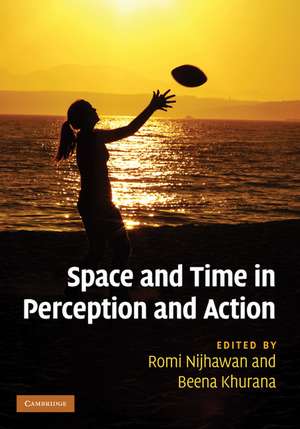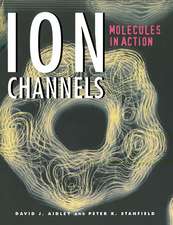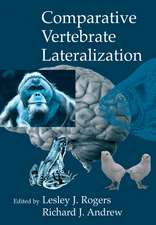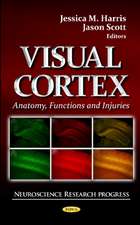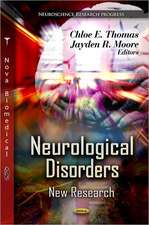Space and Time in Perception and Action
Editat de Romi Nijhawan, Beena Khuranaen Limba Engleză Hardback – 24 mar 2010
Preț: 757.65 lei
Preț vechi: 832.58 lei
-9% Nou
Puncte Express: 1136
Preț estimativ în valută:
144.99€ • 157.44$ • 121.79£
144.99€ • 157.44$ • 121.79£
Carte disponibilă
Livrare economică 01-15 aprilie
Livrare express 18-22 martie pentru 59.17 lei
Preluare comenzi: 021 569.72.76
Specificații
ISBN-13: 9780521863186
ISBN-10: 052186318X
Pagini: 582
Ilustrații: 140 b/w illus. 5 tables
Dimensiuni: 182 x 255 x 31 mm
Greutate: 1.27 kg
Ediția:New.
Editura: Cambridge University Press
Colecția Cambridge University Press
Locul publicării:Cambridge, United Kingdom
ISBN-10: 052186318X
Pagini: 582
Ilustrații: 140 b/w illus. 5 tables
Dimensiuni: 182 x 255 x 31 mm
Greutate: 1.27 kg
Ediția:New.
Editura: Cambridge University Press
Colecția Cambridge University Press
Locul publicării:Cambridge, United Kingdom
Cuprins
List of contributors; 1. Space and time: the fabric of thought and reality Beena Khurana and Romi Nijhawan; Part I. Time-space During Action: Perisaccadic Mislocalization and Reaching: 2. The internal eye position signal, psychophysics and neurobiology John Schlag and Madeleine Schlag-Rey; 3. Factors influencing perisaccadic visual mislocalization Hitoshi Honda; 4. Visual and non-visual factors in peri saccadic compression of space Markus Lappe, Lars Michels and Holger Awater; 5. Keeping vision stable: rapid updating of spatiotopic receptive fields may cause relativistic-like effects M. Concetta Morrone, John Ross and David C. Burr; 6. Combined influences of extraretinal signals, retinal signals, and visual induction on space perception and manual behavior in perisaccadic and steady viewing Leonard Matin and Wenxun Li; 7. Space constancy: the rise and fall of perceptual compensation Bruce Bridgeman; 8. Intercepting moving objects: do eye-movements matter? Eli Brenner and Jeroen B. J. Smeets; 9. The utility of visual motion for goal directed reaching David Whitney, Ikuya Murakami and Hiroaki Gomi; Part II. Temporal Phenomena: Perception: 10. Saccadic chronostasis and the continuity of subjective temporal experience across eye movements Kielan Yarrow, Patrick Haggard and John C. Rothwell; 11. Experiencing the future: the influence of self-initiation on temporal perception Timothy Verstynen, Michael Oliver and Richard B. Ivry; 12. On the perceived interdependence of space and time: evidence for spatial priming in the temporal kappa effect Gisa Aschersleben and Jochen Müsseler; Part III. Temporal Phenomena: Binding and Asynchrony: 13. Dynamics of visual feature binding Colin W. G. Clifford; 14. How does the timing of neural signals map onto the timing of perception? David M. Eagleman; 15. Mechanisms of simultaneity constancy Laurence Harris, Vanessa Harrar, Philip Jaekl and Agnieszka Kopinska; 16. Relative timing and perceptual asynchrony Derek H. Arnold; 17. The time marker account of cross-channel temporal judgments Shin'ya Nishida and Alan Johnston; 18. Simultaneity versus asynchrony of visual motion and luminance changes Martin J. M. Lankheet and Wim A. van de Grind; Part IV. Spatial Phenomena: Forward Shift Effects: 19. The Fröhlich effect: past and present Dirk Kerzel; 20. Approaches to representational momentum: theories and models Timothy L. Hubbard; 21. Conceptual influence on flash-lag effect and representational momentum Masayoshi Nagai, Mutsumi Suganuma, Romi Nijhawan, Jennifer J. Freyd, Geoffrey Miller and Katsumi Watanabe; 22. Perceptual asynchronies and the dual-channel differential latency hypothesis H. Kafaligönül, S. S. Patel, H. Öğmen, H. E. Bedell and G. Purushothaman; 23. Paying attention to the flash-lag effect Marcus V. C. Baldo and Stanley A. Klein; 24. Illusions of time, space and motion: flash-lag meets chopsticks and reversed phi Stuart Anstis; 25. Bridging the gap: a model of common neural mechanisms underlying the Fröhlich effect, the flash-lag effect, and the representational momentum effect Dirk Jancke and Wolfram Erlhagen; 26. Perceiving-the-present and a unifying theory of illusions Mark A. Changizi, Andrew Hsieh, Romi Nijhawan, Ryoto Kanai and Shinsuke Shimojo; 27. History and theory of flash-lag: past, present and future Gerrit Maus, Beena Khurana and Romi Nijhawan; Part V. Space-time and Awareness: 28. Object updating: a force for perceptual continuity and scene stability in human vision James T. Enns, Alejandro Lleras and Cathleen M. Moore; 29. A motion illusion reveals the temporally discrete nature of visual awareness Rufin VanRullen, Leila Reddy and Christof Koch; 30. Priming and retouch in flash-lag and other phenomena of the streaming perceptual input Talis Bachmann; Index.
Recenzii
"... the book may serve as a useful introduction for those interested in this area. Although hardly easy reading, motivated readers will find rich food for thought.
Peter Skorupski, The Quarterly Review of Biology
Peter Skorupski, The Quarterly Review of Biology
Descriere
Brings together cutting edge experiments and theoretical treatments regarding space, time and motion in visual neuroscience and psychophysics.
